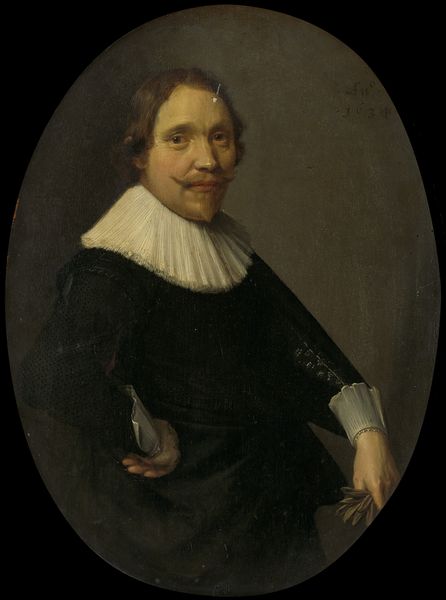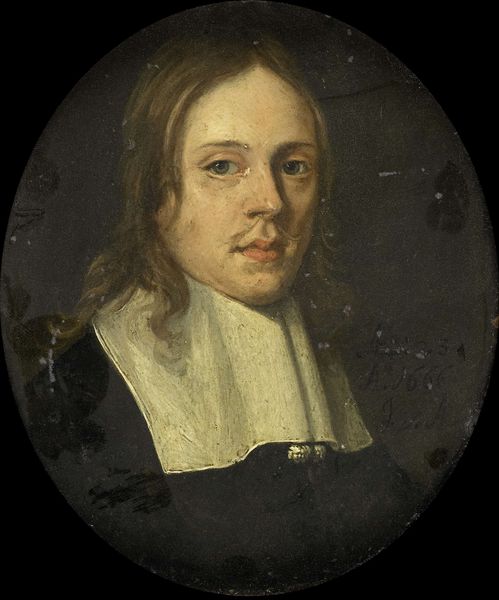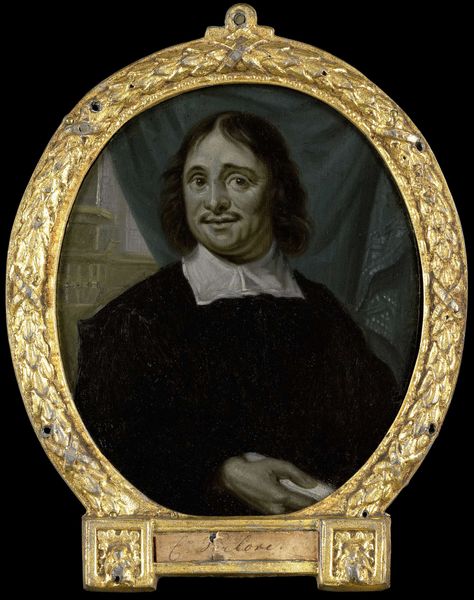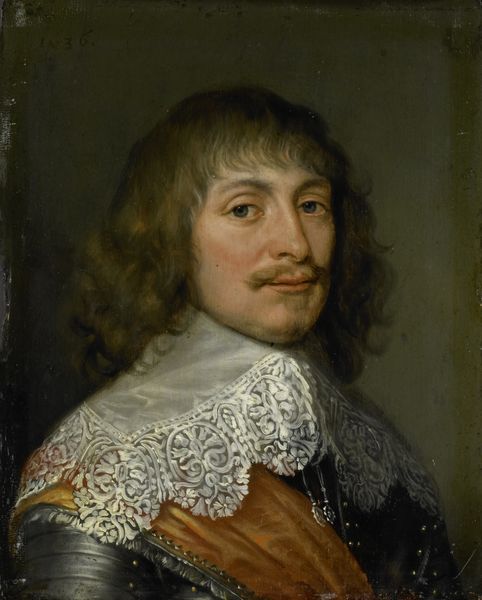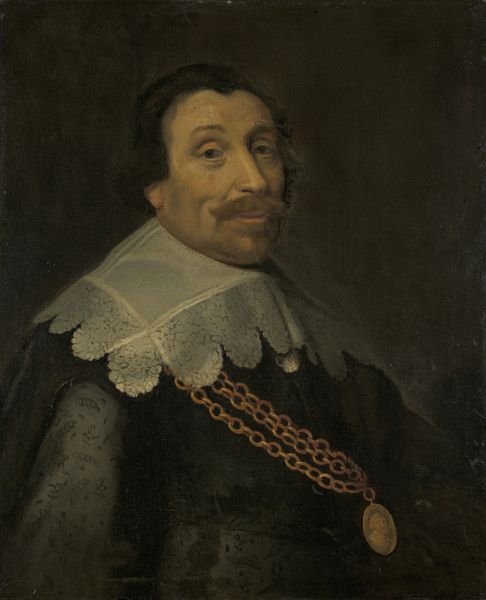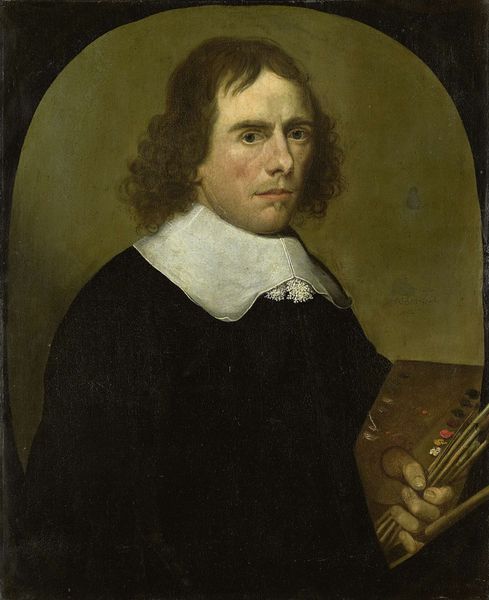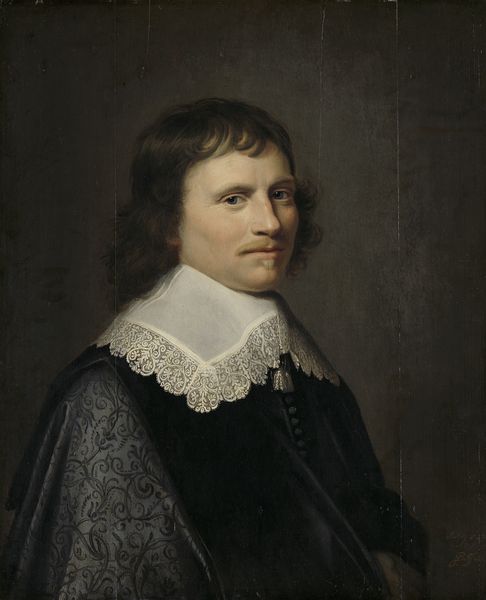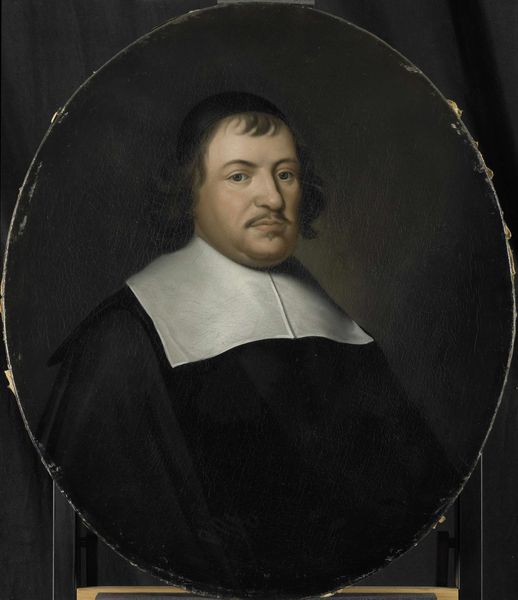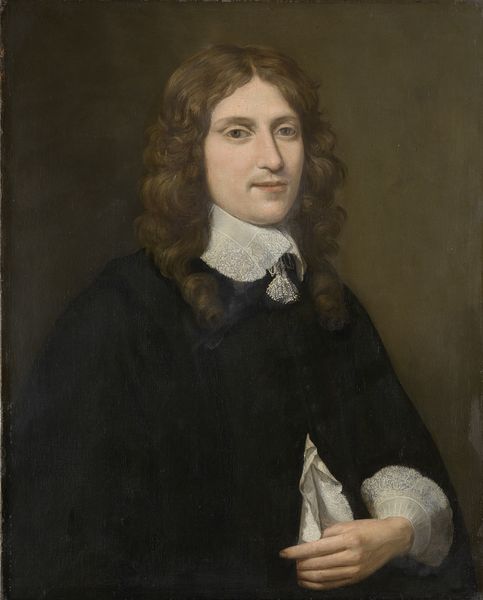
Portrait of Paulus Verschuur, Served seven terms as Burgomaster of Rotterdam and also Director of the Rotterdam Chamber of the East India Company, elected 1651 1695 - 1722
0:00
0:00
painting, oil-paint
#
portrait
#
baroque
#
painting
#
oil-paint
#
portrait reference
#
portrait head and shoulder
#
facial portrait
#
portrait art
#
fine art portrait
#
realism
#
celebrity portrait
Dimensions: height 82 cm, width 68 cm
Copyright: Rijks Museum: Open Domain
Pieter van der Werff painted this portrait of Paulus Verschuur, Burgomaster of Rotterdam, in oil on canvas. Verschuur’s role in the Dutch East India Company gives us a key to understanding this portrait's cultural context. The Dutch Golden Age saw an explosion of portraiture that reflected the growing power and wealth of the merchant class. Verschuur, as both a civic leader and a director of the Company, embodies this new elite. The painting style, while technically skilled, emphasizes Verschuur’s status through his sober attire and dignified pose rather than flamboyant display. The portrait encapsulates the complex relationship between Dutch prosperity and colonial exploitation. Art historians delve into archival records, company documents, and period literature to uncover the social conditions that enabled both the creation of this artwork and the accumulation of Verschuur's wealth. Through such research, we can better understand how art both reflects and shapes the values of its time.
Comments
No comments
Be the first to comment and join the conversation on the ultimate creative platform.


